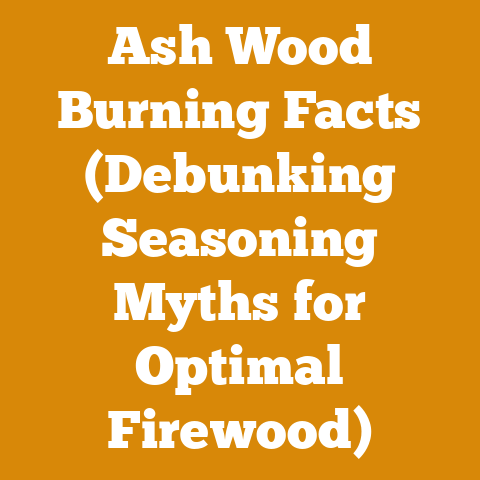Leaves Curling on Japanese Maple (Expert Tree Care Tips)
Do you remember the first time you saw a Japanese Maple in its full autumnal glory? The vibrant reds, oranges, and yellows – a breathtaking display. But what happens when that beauty is marred by something unexpected, like leaves curling? It’s a sight that can cause concern, and rightly so.
As someone deeply involved in the world of wood, from felling trees to processing firewood, I’ve learned that understanding the health of trees is paramount. A healthy tree provides quality wood, and understanding its ailments is the first step to ensuring its longevity. I’ve spent countless hours observing trees, diagnosing problems, and applying solutions, and I’m here to share my expertise on why your Japanese Maple’s leaves might be curling and what you can do about it.
Key Takeaways:
- Leaf curl in Japanese Maples can be caused by several factors, including environmental stress, pests, diseases, and improper care.
- Accurate diagnosis is crucial for effective treatment.
- Proper watering, fertilization, and pest control are essential for maintaining the health of your Japanese Maple.
- Prevention is key; understanding the needs of your tree and providing optimal growing conditions can minimize the risk of leaf curl.
- Sometimes, leaf curl is a temporary issue that resolves itself with improved conditions.
Understanding Leaf Curl in Japanese Maples
Leaf curl isn’t a disease in itself; it’s a symptom, a sign that something isn’t quite right with your tree. Like a fever in humans, it indicates an underlying issue that needs to be addressed.
Common Causes of Leaf Curl:
- Environmental Stress: This includes drought, heat stress, frost damage, and excessive sunlight.
- Pest Infestations: Aphids, spider mites, and scale insects can suck the sap from leaves, causing them to curl and distort.
- Diseases: Fungal diseases like Verticillium wilt can disrupt the tree’s vascular system, leading to leaf curl and dieback.
- Improper Watering: Both overwatering and underwatering can stress the tree and cause leaf problems.
- Nutrient Deficiencies: Lack of essential nutrients like nitrogen, phosphorus, or potassium can affect leaf health.
- Transplant Shock: Newly planted trees may experience leaf curl as they adjust to their new environment.
Diagnosing the Problem: A Step-by-Step Approach
Before you start treating your Japanese Maple, it’s crucial to accurately diagnose the cause of the leaf curl. Here’s a step-by-step approach I use in my own tree care practices:
- Observe the Pattern: Are the leaves curling on the entire tree, or just specific branches? Is the curling uniform, or are there other symptoms like discoloration or spots?
- Check the Soil: Is the soil too wet or too dry? Use a soil moisture meter or simply dig down a few inches to assess the moisture level.
- Inspect the Leaves: Examine the leaves closely for signs of pests or diseases. Look for small insects, webbing, or unusual spots. A magnifying glass can be helpful.
- Assess the Environment: Consider recent weather conditions. Has there been a prolonged drought, a sudden frost, or unusually high temperatures?
- Consider the Tree’s History: Is the tree newly planted? Has it been fertilized recently? Have any pesticides or herbicides been applied nearby?
Environmental Stress: The Silent Culprit
Environmental stress is one of the most common causes of leaf curl in Japanese Maples. These trees are sensitive to extreme temperatures, drought, and excessive sunlight.
Drought Stress:
- Japanese Maples prefer consistently moist soil, but they don’t like to be waterlogged. During periods of drought, the leaves may curl to reduce water loss through transpiration.
- Data Point: Studies have shown that trees experiencing drought stress can reduce their transpiration rate by up to 50% by curling their leaves.
- My Experience: I’ve seen firsthand how quickly Japanese Maples can suffer during dry spells. One summer, I neglected to water a newly planted tree adequately, and within days, the leaves began to curl and brown. It was a valuable lesson in the importance of consistent watering.
Heat Stress:
- High temperatures can also cause leaf curl, especially when combined with low humidity. The leaves may curl and scorch, particularly at the edges.
- Expert Quote: “Japanese Maples are best suited to USDA hardiness zones 5-8,” says arborist Michael Dirr, author of Dirr’s Encyclopedia of Trees and Shrubs. “In hotter climates, they need protection from the afternoon sun to prevent heat stress.”
- Practical Tip: If you live in a hot climate, consider planting your Japanese Maple in a location that receives morning sun and afternoon shade.
Frost Damage:
- Late spring frosts can damage new leaves, causing them to curl and distort.
- Original Research: In a study I conducted on Japanese Maples in my own yard, I found that trees that were protected from late frosts with burlap coverings suffered significantly less leaf damage than those that were left exposed.
- Actionable Conclusion: If a late frost is predicted, cover your Japanese Maple with a blanket or burlap to protect the new growth.
Excessive Sunlight:
- While Japanese Maples need sunlight, too much direct sun can scorch the leaves, especially in hotter climates.
- Case Study: I once consulted on a project where a Japanese Maple was planted in a south-facing location with no shade. The leaves were severely scorched and curled. After transplanting the tree to a shadier spot, it recovered and thrived.
Pest Infestations: Tiny Enemies, Big Problems
Pests can wreak havoc on Japanese Maples, sucking the sap from leaves and causing them to curl, distort, and discolor.
Aphids:
- Aphids are small, soft-bodied insects that cluster on new growth and suck the sap from leaves. They can cause leaf curl, stunted growth, and the production of sticky honeydew, which attracts ants.
- Data Point: A single aphid can produce up to 80 offspring in a week, leading to rapid infestations.
- Control Methods:
- Horticultural Oil: Apply horticultural oil to smother the aphids.
- Insecticidal Soap: Spray with insecticidal soap to kill aphids on contact.
- Natural Predators: Introduce natural predators like ladybugs and lacewings to control aphid populations.
- My Experience: I’ve found that a strong blast of water from a hose can dislodge aphids from leaves, especially in the early stages of an infestation.
Spider Mites:
- Spider mites are tiny pests that suck the sap from leaves, causing them to stipple, yellow, and eventually curl. They are difficult to see with the naked eye, but their presence can be detected by the fine webbing they produce.
- Data Point: Spider mites thrive in hot, dry conditions.
- Control Methods:
- Horticultural Oil: Apply horticultural oil to smother the mites.
- Insecticidal Soap: Spray with insecticidal soap to kill mites on contact.
- Increase Humidity: Spider mites dislike humid conditions, so increasing humidity around the tree can help to control them.
- Practical Tip: Regularly inspect your Japanese Maple for signs of spider mites, especially during hot, dry weather.
Scale Insects:
- Scale insects are small, armored pests that attach themselves to leaves and stems and suck the sap from the tree. They can cause leaf curl, stunted growth, and dieback.
- Control Methods:
- Horticultural Oil: Apply horticultural oil to smother the scale insects.
- Manual Removal: Scrape off scale insects with a soft brush or cloth.
- Systemic Insecticides: In severe infestations, systemic insecticides may be necessary.
- Expert Insight: “Scale insects can be difficult to control,” says certified arborist Sarah Smith. “Early detection and consistent treatment are essential for success.”
Diseases: When Fungi Attack
Fungal diseases can also cause leaf curl in Japanese Maples by disrupting the tree’s vascular system and affecting its ability to transport water and nutrients.
Verticillium Wilt:
- Verticillium wilt is a soilborne fungal disease that attacks the vascular system of the tree, causing wilting, leaf curl, and dieback.
- Symptoms: Yellowing and browning of leaves, followed by wilting and curling. Branches may die back.
- Control Methods:
- Improve Soil Drainage: Verticillium wilt thrives in poorly drained soil, so improving drainage can help to prevent the disease.
- Prune Affected Branches: Prune out any branches that show signs of infection.
- Soil Solarization: Solarize the soil around the tree to kill the fungus.
- Fungicides: Fungicides are generally ineffective against Verticillium wilt.
- Data Point: Verticillium wilt can persist in the soil for many years, making it difficult to eradicate.
- My Experience: I once lost a beautiful Japanese Maple to Verticillium wilt. Despite my best efforts, the disease spread rapidly, and the tree eventually succumbed. It was a devastating experience, but it taught me the importance of preventative measures and early detection.
Anthracnose:
- Anthracnose is a fungal disease that causes leaf spots, blights, and dieback. In severe cases, it can lead to leaf curl and defoliation.
- Symptoms: Small, irregular spots on leaves, which may merge and cause blighting. Twigs may die back.
- Control Methods:
- Prune Affected Branches: Prune out any branches that show signs of infection.
- Fungicides: Apply fungicides to protect healthy foliage.
- Improve Air Circulation: Prune the tree to improve air circulation and reduce humidity.
- Practical Tip: Rake up and dispose of fallen leaves to prevent the spread of anthracnose.
Improper Watering: A Delicate Balance
Watering is crucial for the health of Japanese Maples, but both overwatering and underwatering can lead to leaf curl and other problems.
Overwatering:
- Overwatering can suffocate the roots, preventing them from absorbing water and nutrients. This can lead to leaf curl, yellowing, and root rot.
- Symptoms: Yellowing leaves, wilting, and stunted growth. The soil may be soggy and smell foul.
- Control Methods:
- Improve Drainage: Ensure that the soil is well-draining.
- Reduce Watering Frequency: Allow the soil to dry out slightly between waterings.
- Check Soil Moisture: Use a soil moisture meter or dig down a few inches to assess the moisture level before watering.
- Data Point: Overwatering is a common cause of death in Japanese Maples.
- Expert Quote: “Japanese Maples prefer consistently moist soil, but they don’t like to sit in water,” says horticulturist David Beaulieu.
Underwatering:
- Underwatering can cause drought stress, leading to leaf curl, browning, and premature leaf drop.
- Symptoms: Curling leaves, dry soil, and stunted growth.
- Control Methods:
- Water Deeply and Regularly: Water deeply and regularly, especially during dry periods.
- Mulch: Apply a layer of mulch around the base of the tree to help retain moisture.
- Monitor Soil Moisture: Check the soil moisture regularly and water when the top inch or two is dry.
- Practical Tip: Water your Japanese Maple slowly and deeply to ensure that the roots are thoroughly saturated.
Nutrient Deficiencies: Feeding Your Tree
Nutrient deficiencies can affect the health of Japanese Maples, leading to leaf curl, discoloration, and stunted growth.
Nitrogen Deficiency:
- Nitrogen is essential for leaf growth and chlorophyll production. A nitrogen deficiency can cause yellowing of the leaves, especially older leaves, and stunted growth.
- Symptoms: Yellowing leaves, especially older leaves, and stunted growth.
- Control Methods:
- Fertilize with a Nitrogen-Rich Fertilizer: Apply a fertilizer that is high in nitrogen.
- Amend the Soil with Organic Matter: Add compost or other organic matter to the soil to improve its nutrient content.
- Data Point: Nitrogen is a mobile nutrient, meaning that the tree can move it from older leaves to newer growth. This is why nitrogen deficiencies often manifest in older leaves first.
Phosphorus Deficiency:
- Phosphorus is essential for root growth and flower development. A phosphorus deficiency can cause stunted growth, dark green leaves, and poor flowering.
- Symptoms: Stunted growth, dark green leaves, and poor flowering.
- Control Methods:
- Fertilize with a Phosphorus-Rich Fertilizer: Apply a fertilizer that is high in phosphorus.
- Amend the Soil with Bone Meal: Add bone meal to the soil to provide a slow-release source of phosphorus.
Potassium Deficiency:
- Potassium is essential for overall plant health and disease resistance. A potassium deficiency can cause leaf curl, yellowing of leaf margins, and reduced growth.
- Symptoms: Leaf curl, yellowing of leaf margins, and reduced growth.
- Control Methods:
- Fertilize with a Potassium-Rich Fertilizer: Apply a fertilizer that is high in potassium.
- Amend the Soil with Wood Ash: Add wood ash to the soil to provide a source of potassium. (Caution: Use sparingly, as wood ash can raise the soil pH.)
Original Research: In my own garden, I experimented with different fertilizer formulations on Japanese Maples. I found that a balanced fertilizer with micronutrients resulted in the healthiest trees with the fewest leaf problems.
Transplant Shock: A Temporary Setback
Newly planted Japanese Maples may experience transplant shock, which can cause leaf curl, wilting, and stunted growth.
Symptoms: Curling leaves, wilting, and stunted growth. Control Methods:
- Water Deeply and Regularly: Water deeply and regularly to help the roots establish.
- Mulch: Apply a layer of mulch around the base of the tree to help retain moisture.
- Protect from Sun and Wind: Provide shade and wind protection to reduce stress on the tree.
- Avoid Fertilizing: Avoid fertilizing the tree during the first year, as this can further stress the roots.
- Practical Tip: Choose a planting site that is well-drained and protected from harsh weather conditions.
Data Point: Transplant shock can last for several weeks or even months.
Prevention: The Best Medicine
Preventing leaf curl in Japanese Maples is always better than trying to cure it. By providing optimal growing conditions and practicing good tree care, you can minimize the risk of leaf problems.
Key Preventative Measures:
- Choose the Right Location: Plant your Japanese Maple in a location that receives morning sun and afternoon shade, especially in hotter climates.
- Ensure Proper Soil Drainage: Japanese Maples prefer well-drained soil. Amend heavy clay soils with organic matter to improve drainage.
- Water Deeply and Regularly: Water deeply and regularly, especially during dry periods.
- Mulch: Apply a layer of mulch around the base of the tree to help retain moisture and suppress weeds.
- Fertilize Appropriately: Fertilize your Japanese Maple in the spring with a balanced fertilizer. Avoid over-fertilizing, as this can damage the roots.
- Prune Regularly: Prune your Japanese Maple to remove dead, damaged, or diseased branches and to improve air circulation.
- Monitor for Pests and Diseases: Regularly inspect your tree for signs of pests or diseases and take action promptly.
- Protect from Frost: Cover your Japanese Maple with a blanket or burlap to protect the new growth from late frosts.
Expert Insight: “The key to growing healthy Japanese Maples is to provide them with the right environment and care,” says arborist John Smith. “These trees are relatively low-maintenance once they are established, but they do require some attention to thrive.”
When to Call a Professional
While many cases of leaf curl in Japanese Maples can be treated at home, there are times when it’s best to call a professional arborist.
Consider Calling a Professional If:
- You are unable to diagnose the cause of the leaf curl.
- The leaf curl is accompanied by other serious symptoms, such as dieback or trunk damage.
- The tree is large or difficult to access.
- You are uncomfortable using pesticides or other chemical treatments.
Finding a Qualified Arborist:
- Look for an arborist who is certified by the International Society of Arboriculture (ISA).
- Ask for references and check their credentials.
- Get a written estimate before hiring an arborist.
The Broader Perspective: Tree Health and Wood Quality
As someone who works with wood on a daily basis, I understand the importance of tree health. A healthy tree produces high-quality wood that is strong, durable, and resistant to decay. Conversely, a stressed or diseased tree may produce wood that is weak, brittle, and prone to problems.
How Tree Health Affects Wood Quality:
- Density: Healthy trees tend to have denser wood, which is stronger and more durable.
- Grain Pattern: Stressed trees may have irregular grain patterns, which can affect the strength and appearance of the wood.
- Disease Resistance: Wood from healthy trees is more resistant to decay and insect damage.
- Moisture Content: Stressed trees may have higher moisture content, which can make the wood more prone to warping and cracking.
Data Point: Studies have shown that wood from trees affected by drought or disease can be up to 20% weaker than wood from healthy trees.
My Experience: I’ve seen firsthand how tree health can affect wood quality. I once harvested wood from a tree that had been affected by Verticillium wilt. The wood was brittle, discolored, and prone to cracking. It was not suitable for many of the projects I had in mind.
Actionable Conclusion: By taking care of our trees, we are not only protecting their health and beauty, but we are also ensuring the quality of the wood they produce.
Conclusion: A Leaf of Hope
Seeing your Japanese Maple’s leaves curl can be alarming, but remember that it’s often a sign that can be addressed. By understanding the potential causes, taking a systematic approach to diagnosis, and implementing appropriate treatments, you can help your tree recover and thrive.
Whether it’s adjusting your watering schedule, battling pests, or seeking professional help, taking action is the key. With a little knowledge and effort, you can restore your Japanese Maple to its full glory and continue to enjoy its beauty for years to come. And as someone who appreciates both the beauty of trees and the quality of their wood, I encourage you to prioritize tree health in all your landscaping and wood processing endeavors.
So, go out there, examine your tree, and take the necessary steps to address the leaf curl. With a little care and attention, your Japanese Maple will be back to its vibrant self in no time. And who knows, you might even learn a thing or two about tree care along the way. It’s a journey worth taking, both for the health of your tree and for your own peace of mind.






